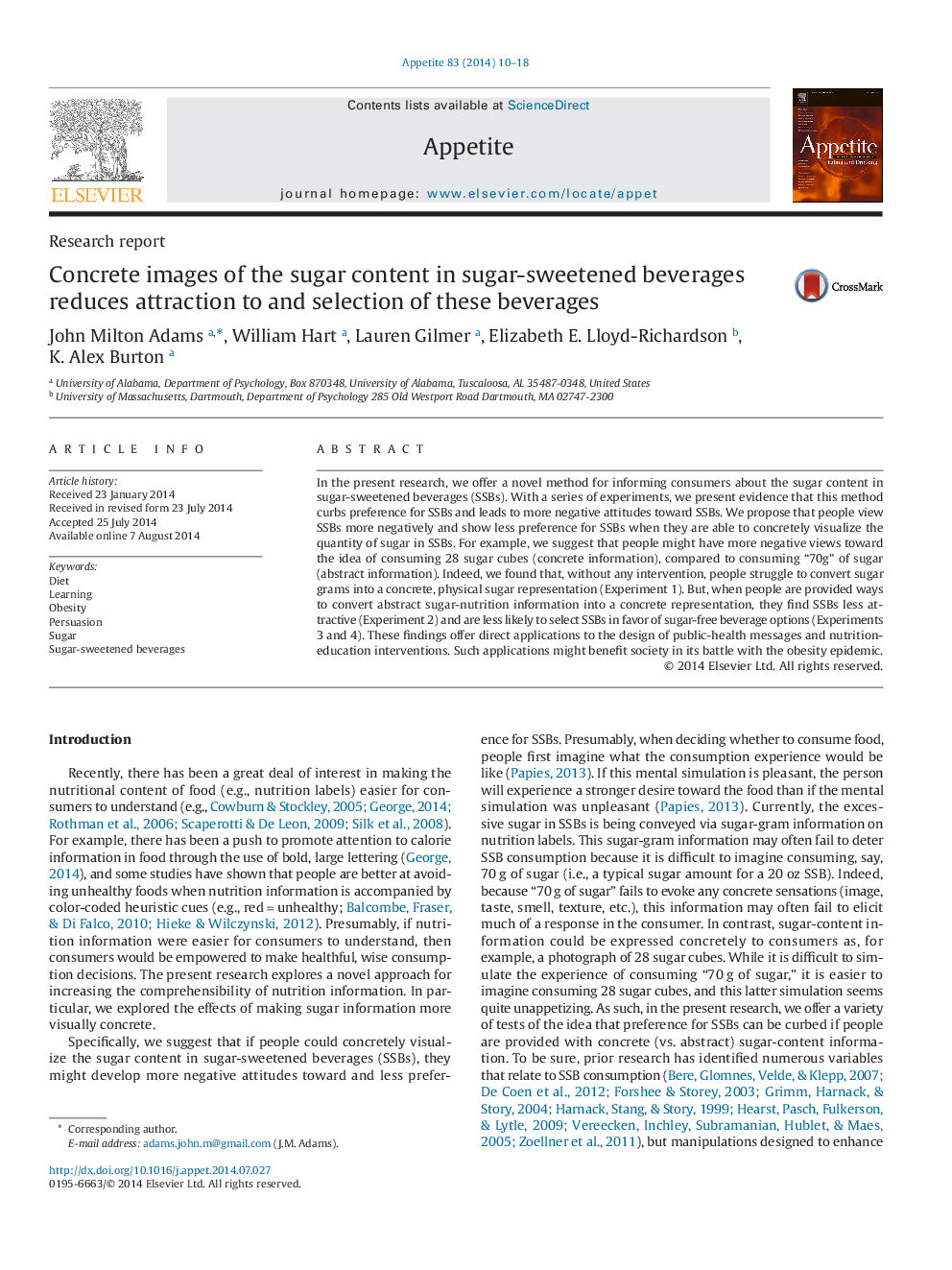| Article ID | Journal | Published Year | Pages | File Type |
|---|---|---|---|---|
| 7309461 | Appetite | 2014 | 9 Pages |
Abstract
In the present research, we offer a novel method for informing consumers about the sugar content in sugar-sweetened beverages (SSBs). With a series of experiments, we present evidence that this method curbs preference for SSBs and leads to more negative attitudes toward SSBs. We propose that people view SSBs more negatively and show less preference for SSBs when they are able to concretely visualize the quantity of sugar in SSBs. For example, we suggest that people might have more negative views toward the idea of consuming 28 sugar cubes (concrete information), compared to consuming “70g” of sugar (abstract information). Indeed, we found that, without any intervention, people struggle to convert sugar grams into a concrete, physical sugar representation (Experiment 1). But, when people are provided ways to convert abstract sugar-nutrition information into a concrete representation, they find SSBs less attractive (Experiment 2) and are less likely to select SSBs in favor of sugar-free beverage options (Experiments 3 and 4). These findings offer direct applications to the design of public-health messages and nutrition-education interventions. Such applications might benefit society in its battle with the obesity epidemic.
Related Topics
Life Sciences
Agricultural and Biological Sciences
Food Science
Authors
John Milton Adams, William Hart, Lauren Gilmer, Elizabeth E. Lloyd-Richardson, K. Alex Burton,
